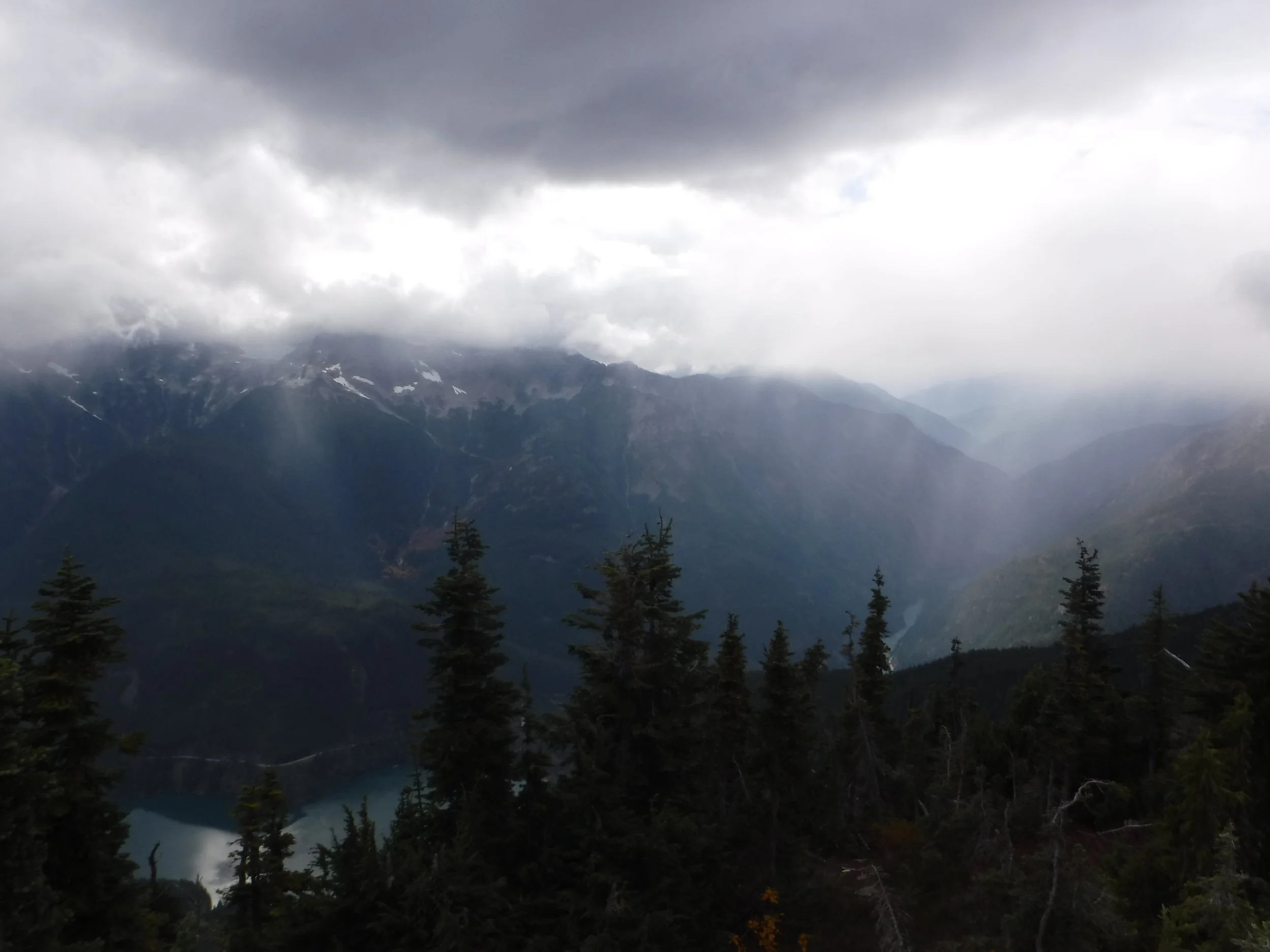The North Cascades Ecosystem has many features to discover for naturalists, students and day hikers alike. Behind all the charismatic megafauna and flora including bears, wolverines, Douglas Firs, and Western Hemlocks are the mountains that make it all possible. In this series, we take a look at the “charismatic mega-rocks” that make the North Cascades one of the greatest natural wonders of this nation. Last time we took a short day hike up Sauk Mountain. Today we take a hike up to one of the most famous fire lookouts in the entire range: Sourdough.
GEOLOGY
Like most of the North Cascades mountain range, Sourdough is mostly comprised of metamorphic rock. Thousands upon thousands of years ago, as the ocean tectonic plate plunged beneath the continent, the intense heat and pressure caused the mountains to rocket out from the ground. Sourdough in particular has a high concentration of Skagit Gneiss, a particular 'flavor' of metemorphic rock found in the Skagit Valley.
While heat and pressure gave birth, water gave the mountain shape. From the glaciers thousands of years ago to the still strong Skagit River, this is a very wet mountain. Dozens of streams dart across each slope. On the northern side there is also a hidden Sourdough Lake.
HISTORY
The people of the Upper Skagit have been and continue to live in this area since time immemorial. But large settlements have not been found around Sourdough. People would hunt and travel through the area, but living specifically in the shadow of the mountain year round was not done.
With European settlement came homesteaders and Seattle City Light. The first wanted to get away from civilization, while the latter wanted to provide power to the 'big city' through damming the Skagit.
Specific to the mountain is the Lookout. The current structure there was built in 1933 by the Civilian Conservation Corps. If you are unfamiliar, fire lookouts are stations where rangers spend months at a time looking over the landscape and alerting everyone about possible fires.
One of the most famous lookouts was Gary Snyder. During the long downtime and having no one to talk to, he wrote a ton of poetry. One of his most famous poems is Mid-August at Sourdough Mountain Lookout.
“Down valley a smoke haze
Three days heat, after five days rain
Pitch glows on the fir-cones
Across rocks and meadows
Swarms of new flies.
I cannot remember things I once read
A few friends, but they are in cities.
Drinking cold snow-water from a tin cup
Looking down for miles
Through high still air
-Gary Snyder”
DIRECTIONS AND TRAILS
From I-5, travel east along WA SR 20. You will be traveling alongside the Skagit river, past the communities of Sedro-Wolley, Concrete, and Rockport. Make sure you get gas in Marblemount. This is the last chance to fill up before the climb. Continue traveling east (you will lose cell-phone reception) to the town of Diablo around mile marker 123. Upon entering the town, continue straight past the yellow gate. The trail sign is on your left.
This trail is very steep. You will travel back and forth on switch backs to try to elevate some of the intensity, but trekking poles are still highly recommended.
The first point of confusion is at the Sourdough Camp site. Instead of continuing going up river, cross it at the camp. Continue on to the top and the lookout.
In total the trail is 5.2 miles with 4870 ft of elevation gain. With enough time to get to the top, enjoy the peak, and come back expect to spend around eight hours.
HABITAT
You can see in the above picture just how dynamic a change of habitat happens in these mountains. Starting from around 1,000 feet above sea level, you will travel through thick forests of Western hemlock and Douglas firs. Just after a mile or so you will start to notice a gradual change to silver fir. These trees can handle the cold better, but we are still a long way from the top.
Both of these forest types on this mountain do not give you great views. It is not until you start reaching the sub-alpine that the forest begins to open up. The mighty mountain hemlock takes over silver fir, although you might not call them mighty at first. Because of the extreme cold and relatively poor nutrient soil near the top, trees don't grow as tall as their coastal cousins. A mountain hemlock at the peak being two feet tall might be fifty years old!
A warning: sub-alpine environments are extremely fragile. When you visit this majestic place, pay extra attention to where you are stepping. Some of those plants took dozens of years to grow, and it might take them that long to recover from your misstep.
VIEW
As amazing as the view can be, be prepared for any weather. In the short amount of time that I was at the top, it fully transitioned to a bright, sunny day to a light dust of snow and back, in early October.
But what you will see are Pyramid and Colonial mountain, along with Diablo Lake, to the south with Ross Lake wrapping around the east and north. Also if you look to the NW you will see the mostly hidden Sourdough Lake.
When you get to the top and are looking over the vast landscape, remember the words of Gary Snyder: "Nature is not a place to visit. It is home."







